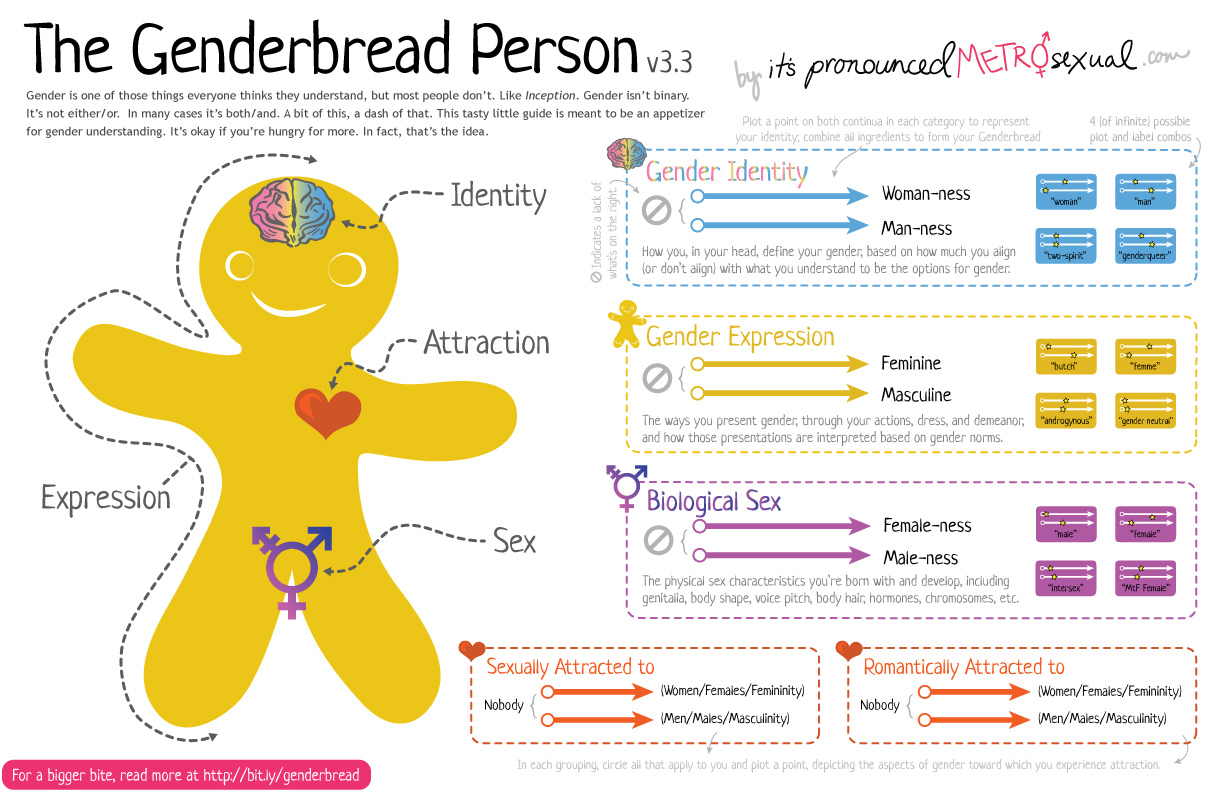After our discussion about complicated and complex, I would like to state that gender identity is COMPLEX. I choose to use the word complex because as we said in class complicated means that it has a solution, and I do not think of gender as something we have to solve. I looked at the publication date as I read chapter 6, Understanding Youth was copyrighted in 2006 and my version was printed in 2015. As I read I notice Nakkula & Toshalis broke chapter 6 into three main sections: a section on female gender, male gender and then a section titled “Coming out and up from Under” (pg 114). This section was added because of its (sexual orientation) “relationship to gender identity development” (pg. 114). At this point I was very disappointed but I read on.
I was disappointed because I was looking for the section about gender identity and how it differs from biological sex. There was no mention at all of the many different gender roles that are present in society, or the struggles of people from the transgender community. If you want to begin to understand the complexity of gender identity take a look IMPACT's Gender Identity Map. This is a great resource, and just the tip of the iceberg of understanding gender identity. Nakkula & Toshalis says that “optimal learning requires the presence of intact, fully present students. If parts of our students are closeted and hidden underground, we all lose out” (pg. 115). If we want our students to express themselves above ground then we need to make sure that our community/society is safe and supportive. We can’t control the whole world, but we can make sure our classrooms, our schools and our community are safe places for all students to be fully present and intact.
(Just a reminder from Fall 2014)
Jenny. I agree that the transgender community and their struggles were definitely missing from Chapter 6. I noticed that as well. And like you say, nothing can really happen in terms of gender discussions unless all parts of the equation are discussed and understood. It is only through open and honest discussion as well as giving LGBTQ students safe spaces that we can move forward in understanding the complex nature of gender.
ReplyDeleteNot to spoil the book for anyone, but there is a chapter later on in which sexual identity orientation is discussed (chapter 9)....I know Nakkula and Toshalis touch upon the transgender community there. While I understand why gender identity and sexual identity are separated into two different chapters, I wish they had put the two chapters at least back-to-back (side-by-side) because I think they go hand-in-hand (okay, I'll stop now). However, Nakkula and Toshalis agree - if a person is transgender, that has more to do with their gender identity than sexual identity, but I think they talk about the transgender community because of the "safe spaces" that they discuss in chapter 9. Maybe in future publications of the book, they will consider changing the order/placement of this piece of identity.
ReplyDeleteWOW,
ReplyDeleteThat gender map is intense, that may make it into my classroom straight on the heels of our race discussion earlier this week. I felt like there was a lot missing from chapter six, I mentioned a few different items in my post, but you have highlighted here some others that I agree with also. I am finding that the case studies we read are narrow, and because of that, misleading and too-neat. What we need is Gregory McGuire to author some fill in the blanks and different perspectives that jigsaw with those stories a-la Wicked, so that we understand a more fuller picture. Much in the same way we need to experience a fuller picture for our own students.
Luckily, we all have each other to make this text messier! We all have students, friends, and family members that fit/don't fit in these categories. These are all experiences that we can draw from. Now we can name things we see in the people/places around us, apply these theories, and make sense of them for ourselves....that's how we become "masters" hehe :)
ReplyDelete